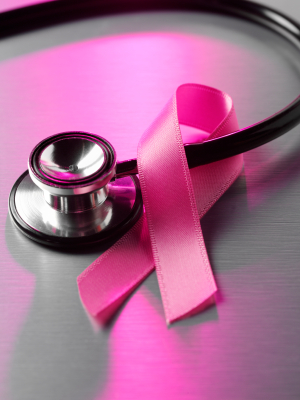Breast Cancer and Government Coverage versus Private Health Insurance
 Here are results from a 2008 paper on the relationship between breast cancer and type of health coverage in Rhode Island. Covering all breast cancer cases registered from 1996 to 2005, the data once again suggest that the uninsured fare almost as well as people on Medicaid.
Here are results from a 2008 paper on the relationship between breast cancer and type of health coverage in Rhode Island. Covering all breast cancer cases registered from 1996 to 2005, the data once again suggest that the uninsured fare almost as well as people on Medicaid.
The table below lists tumor size and stage at diagnosis by type of health coverage. When breast cancer victims on Medicaid are compared to those with private insurance, those on Medicaid have larger tumors at diagnosis and higher stage tumors. They also have more node positive tumors — tumors that have already spread to lymph nodes. This is cause for concern as survival rates are better for small tumors, tumors that are node negative, and those at stage 1 or below. Women on Medicaid who do have early stage tumors are also less likely to have surgery and, if they have surgery, to have surgery that removes only a part of their breast.
Several interpretations are possible. One is that the health behaviors of those on Medicaid differ in important, and poorly considered, ways from the health behaviors of those with private insurance. Another is that these results are roughly similar for people on Medicaid and those who are uninsured because during the time covered by the study, people in the United States with serious illness could access health care whether or not they had coverage.
Although the data are suggestive rather than definitive due to lack of adjustment for demographic factors and socio-economic status, they do not bode well for those who assume that herding millions of people into Medicaid will improve health outcomes. Even this paper’s authors believe that “reduction in disparities in breast cancer presentation and treatment may be possible by increasing enrollment of uninsured, program-eligible women in a state-supported screening and treatment program.”
|
Private Insurance N=3975 |
Medicare N=2592 |
Medicaid N=193 |
No insurance N=116 |
|
|
Median tumor size (mm) |
15.0 |
15.0 |
18.0 |
17.0 |
|
Mean tumor size (mm) |
18.5 |
20.9*** |
24.2*** |
29.5*** |
|
Stage I tumor |
53.7% |
54.4% |
36.7%*** |
37%*** |
|
Node negative |
73.4% |
79.5%*** |
60.9%*** |
58.0%*** |
|
Non- surgical treatment |
4.3% |
8.2%*** |
9.3%*** |
15.5%*** |
|
Breast conservation surgery for those with T1 or T2 tumors |
71.5% |
64.2%*** |
65.4% * |
65.4% |
|
Breast reconstruction for those with mastectomy |
36.6% |
3.8%*** |
26.1% |
5%*** |
(*** indicates results that are significantly different from those seen for the privately insured at 0.01 or above, ** indicates significantly different at 0.05 or above, * indicates significantly different at 0.1 or above.)


Those numbers are frightening, and women should be demanding private care
Yet they are headed to the democratic party in droves
Why though? If they had data like this it could provide the push needed to the other direction
But no one is pushing it
“When breast cancer victims on Medicaid are compared to those with private insurance, those on Medicaid have larger tumors at diagnosis and higher stage tumors.”
The data has never been more clear
Yet the information is not widely accessible
“Although the data are suggestive rather than definitive due to lack of adjustment for demographic factors and socio-economic status, they do not bode well for those who assume that herding millions of people into Medicaid will improve health outcomes.”
It is still worthwhile data
Yeah this would make a great news report
Send to Fox!
One is that the health behaviors of those on Medicaid differ in important, and poorly considered, ways from the health behaviors of those with private insurance.
interesting data for sure
“Another is that these results are roughly similar for people on Medicaid and those who are uninsured because during the time covered by the study, people in the United States with serious illness could access health care whether or not they had coverage.”
This seems like the more likely candidate
I would like to see more diseases like these compared
The effects of obesity and diabetes would be extraordinary
Fantastic post Linda! I love the blogs centered around contemporary woman issues